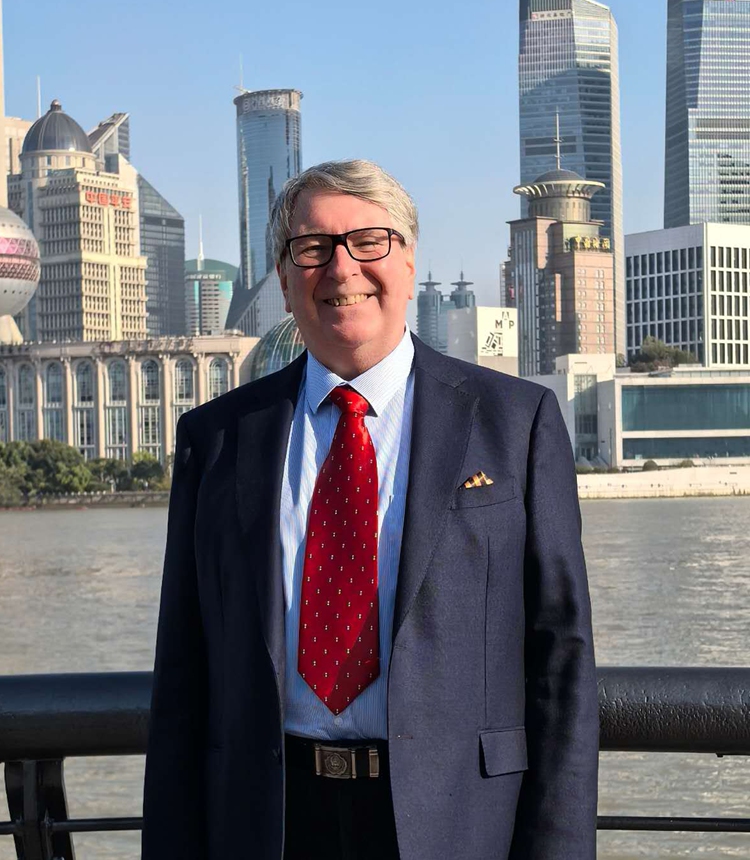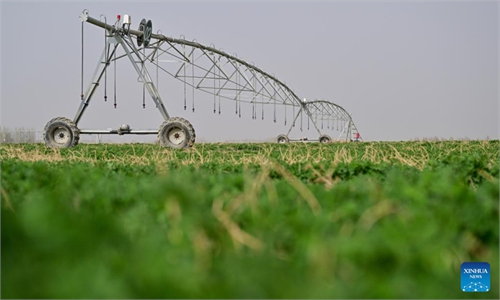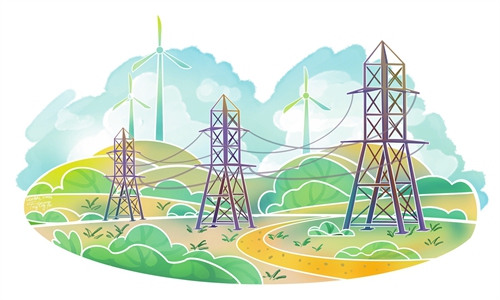
Artists of the Uygur ethnic group gather to perform Daolang Mukam, a traditional art style of singing and dancing, in Aksu Prefecture, Xinjiang Uygur Autonomous Region, on April 15, 2025. Photo: VCG
Editor's Note:
Despite some Western political forces continuing to run smear campaigns against Northwest China's Xinjiang Uygur Autonomous Region, they won't deter the people in the region from embracing peace and prosperity, nor will they halt Xinjiang society's steady development. Seeing is believing, and facts and truth will eventually debunk all lies. In the "Xinjiang Upclose" series, the Global Times (GT) publishes conversations with and articles from scholars and observers from around the world who have visited the region, sharing their firsthand experience of traveling to Xinjiang and observing the daily lives of its people. Through their insights and experiences, we aim to present an authentic perspective on Xinjiang.
In the fourth article of the series, GT reporter Ma Ruiqian interviewed Jean Pégouret (Pégouret), president and founder of the Saphir Eurasia Promotion agency and a French expert on geopolitics. Pégouret shared his views on the Western media's distorted coverage, how the Chinese government has supported Xinjiang's development and his outlook on the region's future.
GT: You previously mentioned that "Western media often distort reports." During your trips to Xinjiang, could you share the most striking experience or scene that challenged any misconceptions you had about the region?
Pégouret: My first trip to Xinjiang in 2023 took me to Urumqi and Kashgar. I had the opportunity to see cotton fields and an associated spinning mill, as well as a water supply project that brings clean water from nearby mountains to residents in a desert area - water that is free from arsenic and lead, suitable for both human consumption and agriculture.
As for the lies repeated by Western media with every surge of anti-China sentiment, the one I would highlight is the alleged use of Uygur "forced labor" in cotton production. In reality, the cotton is grown in fields irrigated automatically from below, and the harvest is carried out using GPS-guided machinery. The cotton is processed and spun in an automated factory with a workforce of just 50 people.
In other words, it would be vastly less profitable to use forced labor to achieve the same result - especially under coercion - which highlights the absurdity of such allegations. These claims, pushed by Western media, are driven solely by the desire to discredit one of Xinjiang's key export products in the eyes of Western consumers. The goal is to stir up social discontent against the Chinese government by undermining the development of one of the autonomous region's main resources.
I would also like to add that, culturally, the region is clearly bilingual, as evidenced by the languages spoken in the streets, the signs on stores and public buildings, and the local TV channels. I also observed that local culture and traditions are well preserved - in architecture, music, education and the practice of Islam. The old city of Kashgar has been rehabilitated, with upgraded seismic resistance and a modern water drainage system. I visited the largest one in Urumqi, which clearly indicates that the mosques are not maintained merely for tourism purposes, but are active religious institutions.
GT: You noted that the Chinese government is capable of making major decisions quickly under the leadership of the Communist Party of China. Could you elaborate on how this efficient governance model benefits Xinjiang's development?
Pégouret: The Chinese governance model is effective and people-oriented. When visiting Xinjiang, one can observe an impressive number of construction sites: housing developments, road and rail infrastructure, agricultural projects, irrigation systems, solar panel power stations, and high-voltage transmission lines. I did not visit any industrial sites, but I know that mining operations are also well developed in the region.
Xinjiang's cultural heritage and local products are promoted throughout China, contributing to the region's development. In Shanghai, for example, beyond the many Xinjiang restaurants across a wide price range, Xinjiang products - including wine - are available in numerous grocery stores.
In addition, China offers the world a constructive model for community integration and the fight against poverty. In 2023, I traversed a peaceful Xinjiang. It was possible to walk freely everywhere and encounter numerous Chinese tourists who had come to admire the region's unique charm.
Nevertheless, Xinjiang remains vigilant against the risk of terrorism reemerging in sensitive areas and the need to maintain stability in key regions. For those at risk of being drawn to radicalism, a benevolent approach has been employed rather than coercion, by providing training and employment opportunities.

Jean Pégouret Photo: Courtesy of Pégouret
GT: You have mentioned that China should adopt a more pragmatic approach in its international communications. How can China better present the real Xinjiang to the world?
Pégouret: The visa exemption policy is a very good initiative. Themed trips could be expanded, such as those centered around festive events, trade fairs, visits to major attractions, cultural and artistic exchanges, forums, and political dialogues. Incentives to visit Xinjiang could include contests, free trips awarded as year-end prizes to students of Chinese language and culture. Similar incentives could also be designed for adults.
There is no doubt that feedback on social media would be positive, and misleading narratives would be weakened. All this can help present an authentic image of Xinjiang through the testimonials of those who have visited the region, provided that malicious and fake reports are strictly filtered out. "Practice is the sole criterion for testing truth." It would be helpful to support all forms of promotion, including RedNote, by encouraging people living abroad - Westerners as well as overseas Chinese - to visit Xinjiang so they can return with stories to tell and their "eyes full of light."
GT: Could you share your thoughts on Xinjiang's future development?
Pégouret: A recent trip to Xinjiang revealed massive crowds of tourists, cotton fields equipped with machines and automatic irrigation systems, large photovoltaic farms, countless high-voltage lines, and large-scale water supply systems - alongside many other economic and social accomplishments. High-quality development and greater opening-up are already underway. Xinjiang's targeted economic growth rate of 6 percent surpasses the 5 percent national target proposed during the 2025 two sessions.
Xinjiang covers one-sixth of China's land area and, as the western gateway of the country, plays a vital role in the Belt and Road Initiative. The region has rich reserves of mineral and energy resources. Its vast, sparsely populated desert areas are an asset, offering ideal conditions for the development of renewable energy, especially solar power. This is precisely why Xinjiang has become one of the key targets of destabilization efforts by certain Western countries. Therefore, vigilance and perseverance must be the guiding principles of reform to protect the region's achievements and support the future development of Xinjiang - and China as a whole.



